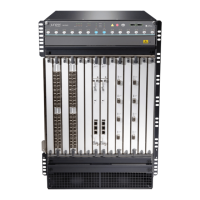5
Table 2. MX Series Features and Benefits
ADVANTAGE FEATURES BENEFITS
High availability • Fully redundant hardware (cooling, power supplies,
Routing Engines, SCBs)
• Modular operating system
• Separate data and control planes
• Graceful restart
• Nonstop routing
• MPLS fast reroute
• VPLS multihoming
• The MX Series design provides the highest level of
redundancy and resiliency to ensure that critical services
and customers stay connected.
• Enables service providers to maximize revenues and
ensure customer satisfaction.
High performance Powered by Juniper’s I-Chip ASIC and Junos Trio chipset, the
MX Series features include:
• Enhanced QoS capabilities
• Additional packet processing flexibility
• Scaling enhancements that include route lookup, next
hop, logical interface scaling, and interface accounting
• Enhanced multicast performance
Industry-leading performance enables the MX Series to
satisfy critical applications at the edge, including voice,
video, and data.
Service flexibility Simultaneous support for Layer 2 and Layer 3 3D Universal
Edge: VPLS, RFC 2547bis IP/MPLS VPNs, Triple Play services
Provides enterprise and residential services from a common
platform increases service breadth and optimizes OpEx
and CapEx.
Virtualization The MX Series has a myriad of virtualization features and
technologies to address enterprise and service provider
requirements.
• Network Service Virtualization (Virtualize access to
services such as security): Services-such as L2VPN,
L3VPN and VPLS allow layering of services on MPLS
network.
• Chassis Virtualization (Many devices virtualize to One
Device): Virtual Chassis
• Device Virtualization (One device virtualizes to many
devices): Virtual Router, Logical Systems, Virtual Switch -
virtualize physical router as multiple logical entities.
• Link Virtualization: (Virtualize Physical Links) VLAN, LAG,
GRE and MPLS LSP virtualize physical links.
Improves network utilization, device utilization, scalability,
and resiliency.
MX240 MX480 MX960MX80

